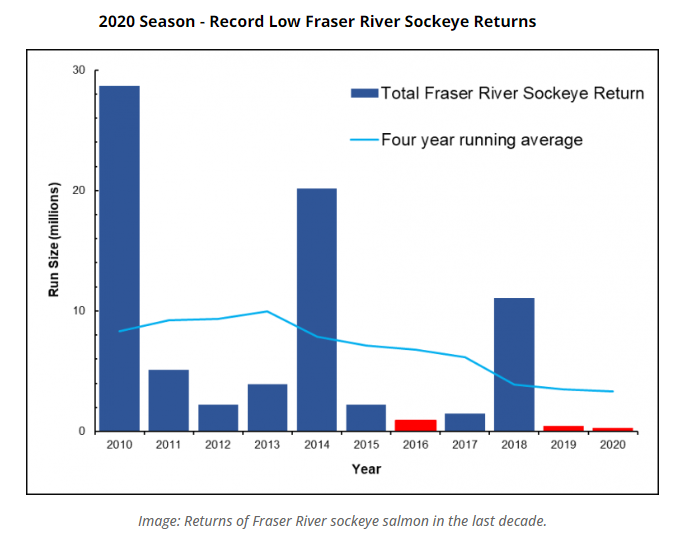Fraser River sockeye salmon returns are looking poor this year, but the Columbia River is expecting record-high numbers.
According to the Pacific Salmon Foundation (PSF), with BC in the fourth year of drought conditions, the Fraser sockeye run is expected to be relatively low compared to previous years. Water temperatures in the river are reaching as high as 21 degrees. Temperatures above 17 degrees can have negative impacts on spawning salmon.
Temperatures are affecting the Columbia, as well. Despite record returns of three-quarters-of-a million sockeye forecast for the Columbia, salmon have been observed holding outside the river mouth, waiting for temperatures to cool so they can enter freshwater and begin spawning.
The Columbia River originates in BC and connects to the ocean near Vancouver, Washington. The river marks the western border between Washington and Oregon. Over the last 15 years, salmon habitat along the river has been improved, including the removal of several hydroelectric dams that were hindering fish movement. The PSF credits the Okanagan Nation Alliance for their recovery work.
“Their sockeye success story is a hopeful example demonstrating the potential of salmon recovery,” said Jason Hwang, PSF’s Chief Program Officer and Vice President of Salmon in a blog post.
In contrast, Fraser sockeye returns are expected to be just over a half-million, not as bad as record lows recorded in 2020, but far from the record high return of 28 million in 2010. Hwang says that’s partly because of a huge rockslide in the Fraser River at Big Bar in 2019, which affected 81% of all Fraser sockeye runs.
Despite efforts to mitigate the slide, including the creation of a fish passage, transporting fish by helicopter and truck, and collecting broodstock to artificially add salmon to the most-affected runs, its effects are still felt today.
“There was hope that these conservation enhancement efforts would help augment this population and mitigate impacts from the Big Bar Landslide, but these efforts may not be as beneficial as hoped,” Hwang said.
Sockeye salmon have a four-year life cycle, which explains why runs four and five years after the slide were smaller than usual — they are descendants of the few salmon which were able to make it past the slide to spawn.
This year’s Fraser sockeye returns are descended from the record-low returns in 2020.







